
This OER textbook has been developed to support English Composition and Rhetoric courses at rural Arizona community colleges.
- Subject:
- Composition and Rhetoric
- English Language Arts
- Material Type:
- Textbook
- Author:
- Erik Wilbur
- Date Added:
- 05/17/2023

This OER textbook has been developed to support English Composition and Rhetoric courses at rural Arizona community colleges.
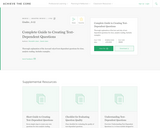
Thorough explanation of the how and why of text-dependent questions for close, analytic reading. Includes examples.
The Common Core State Standards for reading strongly focus on students gathering evidence, knowledge, and insight from what they read. Indeed, eighty to ninety percent of the Reading Standards in each grade require text dependent analysis; accordingly, aligned curriculum materials should have a similar percentage of text dependent questions.
As the name suggests, a text dependent question specifically asks a question that can only be answered by referring explicitly back to the text being read. It does not rely on any particular background information extraneous to the text nor depend on students having other experiences or knowledge; instead it privileges the text itself and what students can extract from what is before them.

The goals of this class are two-fold: the first is to experience the creative processes and storytelling behind several of theater's arts and to acquire the analytical skills necessary in assessing the meaning they transmit when they come together in production. Secondly, we will introduce you to these languages in a creative way by giving you hands-on experience in each. To that end, several Visiting Artists and MIT faculty in Theater Arts will guest lecture, lead workshops, and give you practical instruction in their individual art forms.
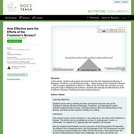
Students will analyze documents from the War Department’s Bureau of Refugees, Freedmen, and Abandoned Lands — better known as the Freedmen’s Bureau — that Congress established on March 3, 1865, as the Civil War was coming to an end. Using the scale in Weighing the Evidence, students will evaluate the effectiveness of the Freedmen’s Bureau in assisting formerly enslaved persons. Learning Objectives: Students will be able to identify and draw conclusions about the roles of the Freedmen’s Bureau (Bureau of Refugees, Freedmen, and Abandoned Lands), critically analyze primary sources, formulate opinions about the effectiveness of the Bureau, and back up their opinions verbally or in writing.
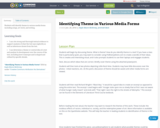
Students will identify theme in various media forms including songs, art-work, and writing.
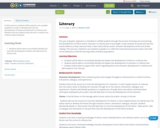
In this resource, students will be asked to use a graphic organizer in order to identify and track the development of theme and character in a literary text. Students will use evidence from the text to construct an evidence based response.
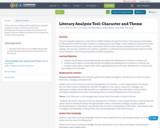
In this resource, students will be asked to use a graphic organizer in order to identify and track the development of theme and character in a literary text. Students will use evidence from the text to construct an evidence based response.

This course deals with advanced design theories and textual analysis. Emphasis is placed on script analysis in general, as well as the investigation of design principles from a designer's perspective. Students also refine technical skills in rendering and presentation, historical research, and analysis. Class sessions include interaction with student/faculty directors and other staff designers. The goal of this course is for students to approach text with a fresh vision and translate that vision into design for performance.
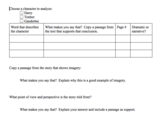
Whether freshmen or AP seniors, students often forget to back up their statements about texts with evidence for support or to begin with the text when considering answers to literary questions. The more we ask them to provide textual evidence in discussion, analysis activities, essays, and on tests, the more ingrained this important skill will become. This lesson was designed for freshmen at the beginning of the year as they begin analyzing literature. The handout and question refer specifically to the story "Poison" by Roald Dahl, but feel free to remix the lesson to work with another text, older students or nonfiction.